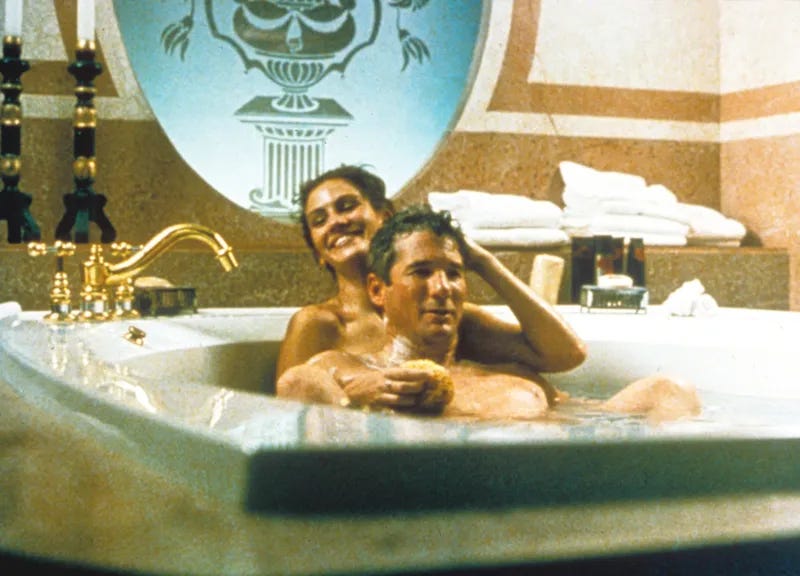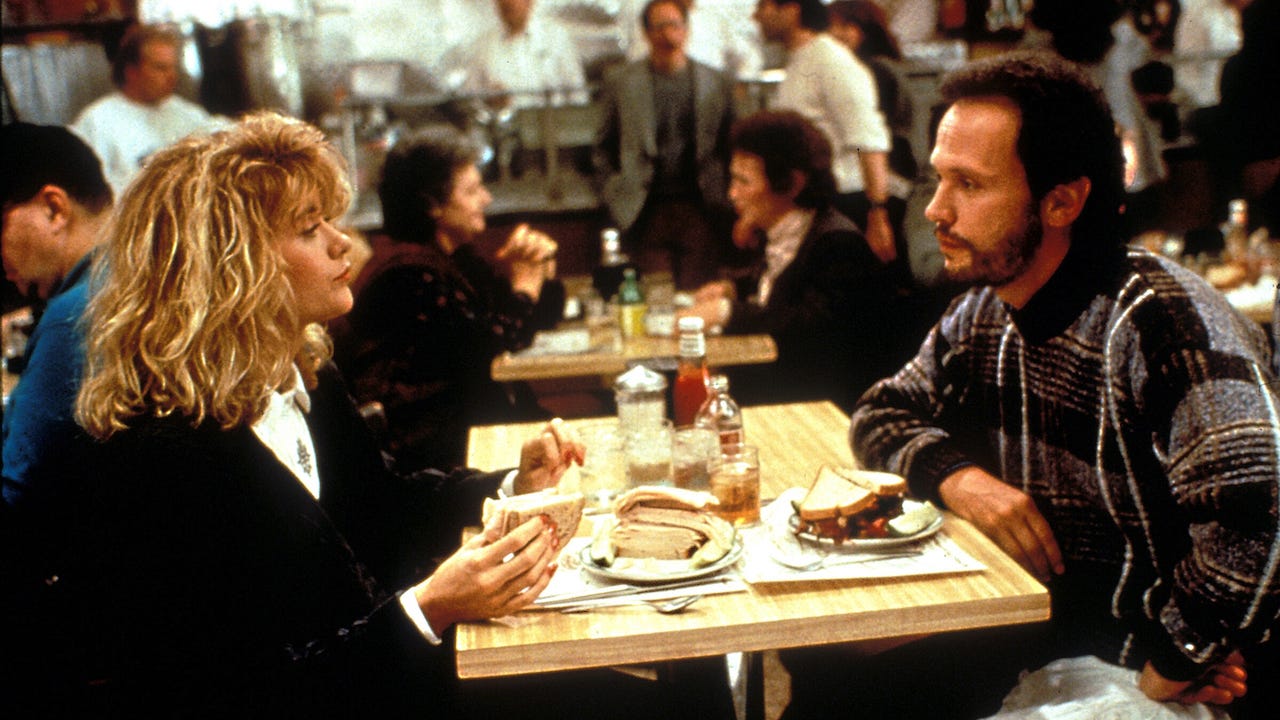As readers of my Substack newsletters are aware, I am somewhat of a skeptic on the subject of romance. How else could you write a series called Rotten Romance, a compilation of three decades of failed (but generally funny) relationships with the opposite sex? Even as I put the finishing touches on the complete manuscript, I’m ready to be done with the subject, whether it finds a real publisher or not.
But that exercise left me wondering, do I really know what romance is all about? And could I write a successful one, preferably in a humorous vein, because I can’t get too serious about anything anymore? I believe I've been in love 2.5 times in my seven decades on the planet (the .5 is for a college romance that pretty much fizzled when he refused to give up his other girlfriend), and so I think I recognize the symptoms—the fluttery pulse, the breathlessness, that sense that you simply cannot live your life without this other person. But all that has to do with feeling, not writing. What happens when writers attempt to frame the subject? Ah, then we get stories of romance, happy and tragic. We get operas and plays. We get a genre of movie that is only about a century old, but whose plots and themes and characters can often be traced back to Shakespeare. That genre is known as the romantic comedy (or romcom) and online sources cite its origin in a silent film called Girl Shy (1924), a “timeless classic with the beloved rush-to-the-altar climactic scene.”
And so I began my research into romance with an orgy or romcoms, a feat that would not have been possible without the advent of online streaming services (YouTube was founded in 2005, Netflix arrived a year later). I haven’t yet put a cap on how many I can stand, but I quickly learned to make a hasty retreat as soon as the “ick factor” kicked in. Like, no way could I fall for Angela Bassett’s savvy high-powered executive getting serious about a Jamaican line cook half her age in How Stella Got Her Groove Back, and I had to shut down Coming to America because it now seems embarrassingly racially tone deaf and incredibly unfunny.
But I’m getting ahead of myself.
Any woman who worked in journalism in New York in the 1980s, as I did for a magazine called Savvy (already fondly recalled in earlier posts on “Eat My Memoir”) wanted to be Nora Ephron. She was best known at the time for profiles and acerbic essays for Esquire like “A Few Words About Breasts” and “Helen Gurley Brown Only Wants To Help.” Or for her memorable takedown of New York Post publisher Dorothy Schiff, whom she compared with Marie Antoinette, “as in let them read schlock.” She had the smart funny lines and super-cool aura of the girl reporter in screwball comedies from the 1930s. So it was perhaps no surprise that she turned to writing and directing later in the decade, adapting her heavily autobiographical novel Heartburn for the screen.
And so it was there that I started my quest to understand romantic comedy, although I submit that no movie in which a husband cheating on his heavily pregnant wife is in any way funny. And one look at Jack Nicholson in the very first frames and you’re sure he’s still channeling murderous writer Jack Torrance from The Shining. But the movie does have some irresistible bits, like John Wood playing Alistair Cooke and offering updates on the heroine’s marriage via Masterpiece Theater.
From there I moved on to Ephron’s most famous troika of romcoms: When Harry Met Sally (1989), Sleepless in Seattle (’93), and You’ve Got Mail (’98). Yes, I had seen these first time around in movie theaters and remembered a few choice bits, such as Sally Albright’s fake orgasm in the coffee shop. I wasn’t thinking too clearly when I settled on these because I’d forgotten that I can’t stand Meg Ryan. If Meg Ryan is/was America’s sweetheart, I would far rather be the wallflower at the orgy, as Ephron titled one of her essay collections. When Billy Crystal wakes with a look of sheer terror on his face the morning after his first night with Sally/Meg, I could fully identify. When Kathleen Kelly (Ryan) from You’ve Got Mail shadow-boxes with her professional nemesis, throwing cutesy ineffectual girl punches, my stomach heaved. When she totally fell for the jerk who put her out of business, I tossed the remote in the air.
But I recognized that part of the huge appeal of these movies for my generation was the lifestyle of the upper-middle-class white urban striver (yes, let’s call them Yuppies) presented as intrinsic to the story. In my 30s and 40s in Manhattan, I wanted to hang with similar smart and clever friends, eat at stylish restaurants, stroll through garbage-free Central Park, live in a cool apartment, houseboat, or downtown loft. The problems we really faced—roach-infested overpriced sublets, a parent’s sudden death, obnoxious friends—never really surface in Ephron romcoms, where everything is really, mostly, unbelievably nice. There were even disposable nice-guy boyfriends (played by Bill Pullman and Greg Kinnear) who didn’t mind being ditched for true love.
If Meg Ryan exuded all the sex appeal of a walking vanilla milkshake, the decade also gave us the perfect antidote: Julia Roberts in Pretty Woman, My Best Friend’s Wedding, and Notting Hill. Roberts could play zany and borderline raunchy, snarky, conniving, and just plain hurtful without ever losing our sympathies. Her hair was so great it deserved an Oscar of its own. And she has a gift for physical comedy that few of her peers can match. Who can forget Julia snapping a snail shell across on elegant dining room or grasping Richard Gere’s torso between her legs in an oversized hotel bathtub, declaring, “So basically we’re talking 88 inches of therapy”?
My all-time favorite of the decade, though, was Four Weddings and a Funeral in 1994, which launched Hugh Grant as the ultimate Brit leading man—an affable self-deprecating charmer with floppy hair and a lopsided smile. To me the movie seems also an impeccable feat of casting, with unexpected characters—a deaf-mute brother, a cozy gay couple—lifting it beyond the usual stereotypes of the genre. And it was probably the only instance when a W.H. Auden poem had moviegoers reaching for their hankies.
In the last few years, critics have declared the ‘90s the apogee of the romcom. "An increase in irony has helped to drive a stake through the genre's traditionally unabashed earnestness, and a rise in feminist critiques — much of it fueled by online culture — has also certainly been a factor in tearing down the sexist tropes that dominated the genre," wrote one reporter in 2015. "Mostly, I think we just got tired of living the baby boomer fantasy of ideal romantic love, propagated in large part by the society's unprogressive cultural expectations regarding gender roles."
But not so fast, dude, the romcom, as I see it, is not dead at all but has evolved in wily ways that reflect the times and attempt to break new ground. And so, class, before my brain turns completely to sap, we will pick up the discussion next week.






Looking forward to you picking it up next week. And I am SO happy that someone other than me has a bit of a nasty taste in their mouth when considering Meg Ryan and her one-role-portrayal- fits-all style of acting. I agree with you that Julia Roberts' hair deserves an Oscar, and I relate to your assessment of Jack, who I usually find just a little scary - although his role in As Good As It Gets was a lovely portrayal of crazy. Love it when his character is playing the piano and singing "Always look on the bright side of your life." Thanks for the bright side Ann!
My philosophy holds that a 90s romcom, like a good tater tot hotdish, can be just the balm we all need sometimes. Not anything I want every day. But man, when I need comfort, both will do the trick every time 😉